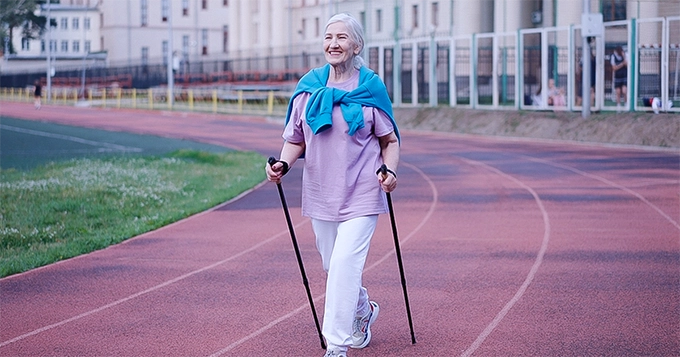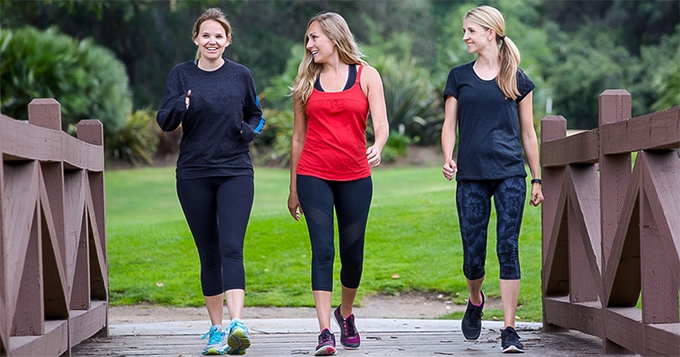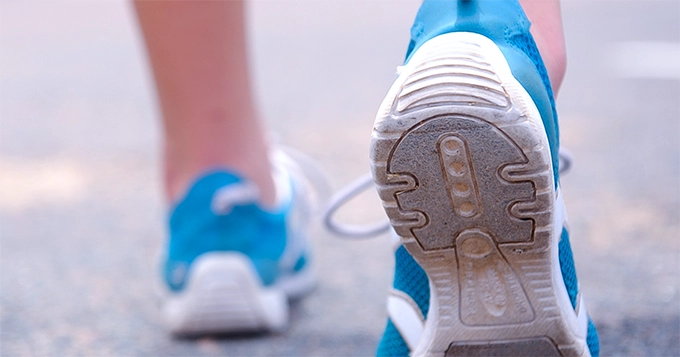Regular physical activity is essential for good health, especially if you’re trying to lose fat or maintain a healthy weight.
When trying to lose a few pounds, increasing your physical activity increases the number of calories your body uses for energy. This, combined with reducing the number of calories you eat, creates a “calorie deficit” that results in weight loss. But in order to maintain weight loss, you need to engage in regular physical activity.
Most importantly, physical activity not only helps with weight reduction but also reduces risks of cardiovascular diseases and diabetes. One of the best ways to incorporate regular physical activity into our daily life is by walking. Knowing how much to walk to lose weight is essential in reaching your desired outcome.
Factors Affecting Weight Loss
Factors that affect weight loss that a person usually doesn’t have control over:
-
Age
Muscle mass declines with age. This has a more significant impact than simply losing muscle definition and tone. Muscle burns more calories than fat, so having less muscle makes it more difficult to use the calories you consume.
As you get older, you lose your muscle and bone density. Your lean body mass begins to decline by slightly more than half a pound per year as early as age 30. When you step on the scale, you may not notice a difference because the lean weight you lose is frequently replaced by fat.
Adults aged 59 and younger benefit the most from 8,000 to 10,000 steps per day, while adults aged 60 and older benefit the most from 6,000 to 8,000 steps per day.
-
Gender
Several studies have also found that gender differences in weight control may exist. Men have more lean muscle mass than women, which allows them to lose weight faster.
Women, on average, also have a lower metabolic rate than men by nature. This means that they use fewer units of energy or calories to fuel normal body functions such as breathing, thinking, and blood circulation. Excess calories are stored as fat. A slower metabolic rate makes losing weight more difficult.
-
Genetics
At least some of the answers to your weight gain or loss can be found in your DNA. Genetics will make it more difficult for some people to lose weight, and dieters with a genetic variant may lose weight more slowly than others.
A DNA health test is the best way to determine whether genetics play a role in your weight loss journey. Once you know what you’re up against, you can work on changing your habits, lifestyle, and mindset to overcome your genetic makeup and regain control.
But your genes are only one piece of the bigger picture. To stay in shape, we must all eat well, exercise regularly, and make long-term commitments to healthy choices.
-
Medical conditions
Polycystic ovary syndrome, hypothyroidism, insulin resistance, hormonal changes, and mental health conditions can cause weight gain. In most cases, it also makes it more difficult to lose weight.
Other factors that affect weight loss that a person can have more control over:
- Physical activity
Physical activities burn calories. Weight loss can happen if you burn more calories than what you intake.
- Diet
A proper diet is another factor that will help you on your weight loss journey. A diet tailored to your specific needs can significantly improve your health and make it easier to reach your weight-loss goals.
How Much Walking to Lose Weight?
If you walk a mile in 12 minutes, you’ll burn 8.3 calories per minute; if you take 20 minutes and walk slowly, you’ll burn 5 calories per minute.
A 30-minute brisk walk will burn approximately 150 calories. If you do this every day for a week, you will burn 1,050 calories. Losing a pound of fat requires 3,500 calories to burn. So, losing a pound solely through a 30-minute daily walking habit would only take about 3 weeks. You could lose about 15 pounds in a year.
How to Get the Most Out of Walking for Weight Loss
- Picking up the pace. Increasing the pace does not imply that you should run. Brisk walking is good for burning extra calories.
- Wearing a weighted vest. If you walked at the same pace on a 5-10% gradient while wearing a weighted vest that represented 10% of your body weight, you could burn 13% more calories.
- Walking uphill. You should walk uphill on a regular basis to help increase the calories you burn.
- Focusing on form and posture. While walking, you should concentrate on tightening your abdominal muscles and glutes.
- Power walking in intervals. Start warming up by walking for 5 to 10 minutes. Then pick up the pace for 10 to 15 seconds at an uncomfortable but sustainable pace before returning to a normal walking pace.
- Add a few extra steps. How much to walk for weight loss matters. If you try to occasionally add more steps to your daily walks, you are building your stamina while burning more calories.
How to Incorporate Walking Into Your Daily Routine
- Make it social
Try including a walk when meeting up with friends and family, or go for a walk and call a friend to catch up.
- Make it a routine
Make it a part of your routine – try scheduling a walk during your lunch break or a walk around the block before dinner.
- Leave the car at home
If at all possible, leave the car at home for shorter trips such as errands or a school run.
- Park further away
When choosing a parking space, such as at the supermarket, park as far away from the building as possible.
- Public transport
If you’re taking public transportation, get off at the first stop and walk the rest of the way.
- Track your activity
To track your steps and activity levels, purchase a wearable device or download a fitness app to simplify your journey to weight loss. Setting a daily goal also helps you stay motivated and on track.
Note: It’s advisable to consult your doctor before jumping into any new or more strenuous exercise.
Conclusion
Walking is part of our lives and in the right manner, you can incorporate this into your routine to maintain or lose a few pounds. Use this article to learn how to maximize your daily walks in order to make them worthwhile and effective for reaching your desired weight. If you feel intimidated, you can jumpstart your fitness journey by simply downloading a calorie burn calculator for walking.












